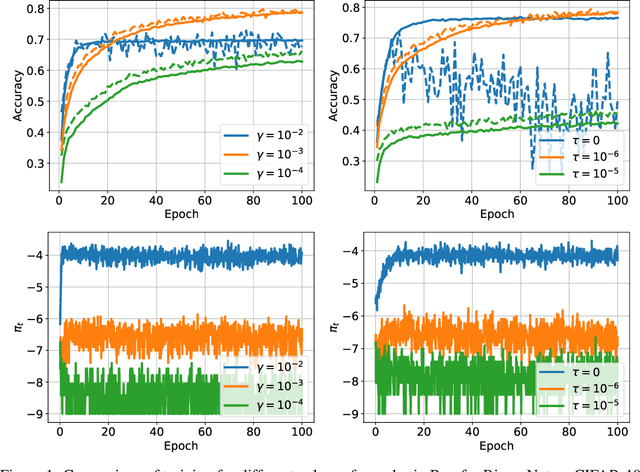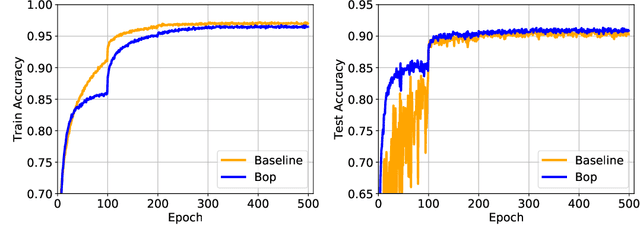Roeland Nusselder
Latent Weights Do Not Exist: Rethinking Binarized Neural Network Optimization
Jun 05, 2019

Abstract:Optimization of Binarized Neural Networks (BNNs) currently relies on real-valued latent weights to accumulate small update steps. In this paper, we argue that these latent weights cannot be treated analogously to weights in real-valued networks. Instead their main role is to provide inertia during training. We interpret current methods in terms of inertia and provide novel insights into the optimization of BNNs. We subsequently introduce the first optimizer specifically designed for BNNs, Binary Optimizer (Bop), and demonstrate its performance on CIFAR-10 and ImageNet. Together, the redefinition of latent weights as inertia and the introduction of Bop enable a better understanding of BNN optimization and open up the way for further improvements in training methodologies for BNNs. Code is available at: https://github.com/plumerai/rethinking-bnn-optimization
Efficient Computation in Adaptive Artificial Spiking Neural Networks
Oct 13, 2017



Abstract:Artificial Neural Networks (ANNs) are bio-inspired models of neural computation that have proven highly effective. Still, ANNs lack a natural notion of time, and neural units in ANNs exchange analog values in a frame-based manner, a computationally and energetically inefficient form of communication. This contrasts sharply with biological neurons that communicate sparingly and efficiently using binary spikes. While artificial Spiking Neural Networks (SNNs) can be constructed by replacing the units of an ANN with spiking neurons, the current performance is far from that of deep ANNs on hard benchmarks and these SNNs use much higher firing rates compared to their biological counterparts, limiting their efficiency. Here we show how spiking neurons that employ an efficient form of neural coding can be used to construct SNNs that match high-performance ANNs and exceed state-of-the-art in SNNs on important benchmarks, while requiring much lower average firing rates. For this, we use spike-time coding based on the firing rate limiting adaptation phenomenon observed in biological spiking neurons. This phenomenon can be captured in adapting spiking neuron models, for which we derive the effective transfer function. Neural units in ANNs trained with this transfer function can be substituted directly with adaptive spiking neurons, and the resulting Adaptive SNNs (AdSNNs) can carry out inference in deep neural networks using up to an order of magnitude fewer spikes compared to previous SNNs. Adaptive spike-time coding additionally allows for the dynamic control of neural coding precision: we show how a simple model of arousal in AdSNNs further halves the average required firing rate and this notion naturally extends to other forms of attention. AdSNNs thus hold promise as a novel and efficient model for neural computation that naturally fits to temporally continuous and asynchronous applications.
 Add to Chrome
Add to Chrome Add to Firefox
Add to Firefox Add to Edge
Add to Edge